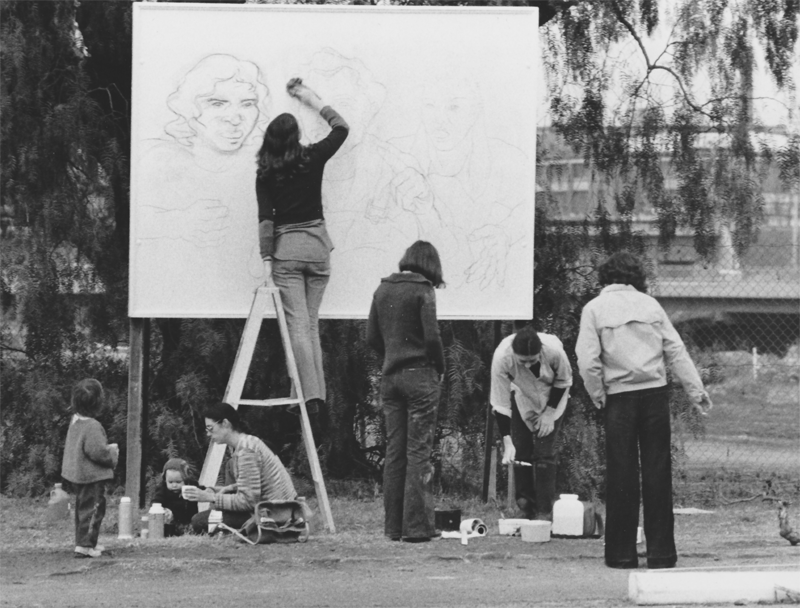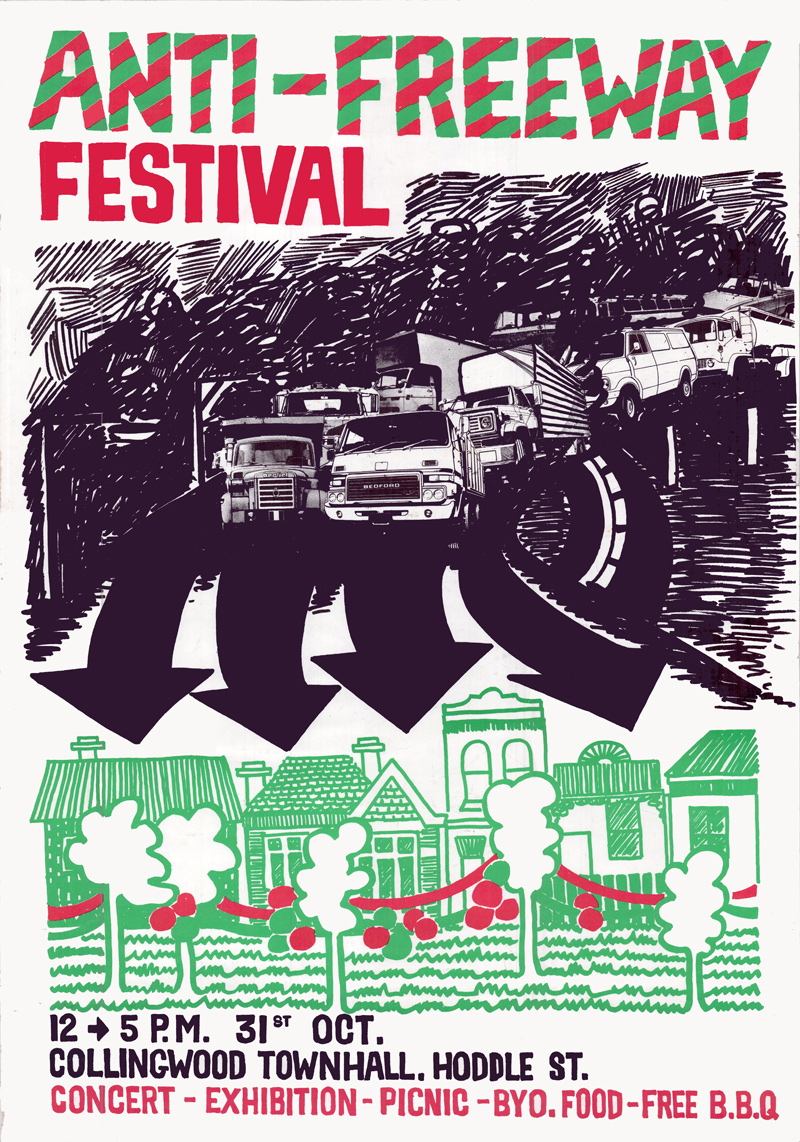
About the Community Art Workers
Community Art Workers was established after an extensive study of public art in Mexico, Chicago and London by Geoff Hogg and Charlotte Clemens. In its heyday, there were 100 members and it lasted for about four years before succumbing to infighting. Other leftwing art groups followed, namely Permanent Red initiated by Noel Counihan, and the Art Workers Union.The times before the Whitlam government were oppressive and reactionary. Australians learned British history at school; Australian artists were advised to “go overseas” to gain notoriety; jobs were lost for having hair long hair or for wearing shorts and socks on a hot day; police were often violent; the white Australia policy was in full swing; women and homosexuals were second class citizens; abortion was illegal, bikinis were measured on the beach by inspectors and women’s wages were half that of men; construction workers were dying on building sites because of the appalling conditions; aboriginals could not yet vote; young men were conscripted into the forces and sent to Vietnam to fight America’s war; books were regularly banned.
British and American values dominated Australian culture. There were few Australian authors and children’s book writers; our music, films, TV, and art and design needed to be validated by Britain or America. Artists often left Australia in search of fame overseas. Indigenous culture was a mystery to most. Even our food consisted of the cringe worthy meat and two veg. Australians were often portrayed in films as buffoons, oddly tough and rough around the edges.
The formation of Community Art Workers was an attempt to combat the controlling hold of Britain and America on Australian culture, to revive and encourage Australian culture by keeping it relevant to ordinary people. Our idea was to keep it real, accessible, and comprehensible in places frequented by ordinary people such as on the streets, in pubs and community centers, rather than hidden away in intimidating places that resembled archaic institutions. The artwork was generally in a style that most people could understand and subject matter showed respect for the lives and problems of the majority of Australians.
We joined community groups in their struggles for just and reasonable outcomes. Not about just anything but legitimate struggles to create a fairer and more equitable society. We printed posters, produced radio programmes affiliated with 3CR, some in other languages which spawned the idea of SBS which came later, painted murals, joined festivals, gave public talks, radio interviews, held exhibitions, painted banners, published and illustrated books and magazines, and encouraged live Australian music in public venues and indigenous art. I believe someone even painted a tram, but I cannot verify that.
The jargon and the artwork was sometimes extreme, but many of the ideas have become mainstream. Now we have a choice of venue or type of art we wish to engage in which is a great improvement.
Charlotte Clemens